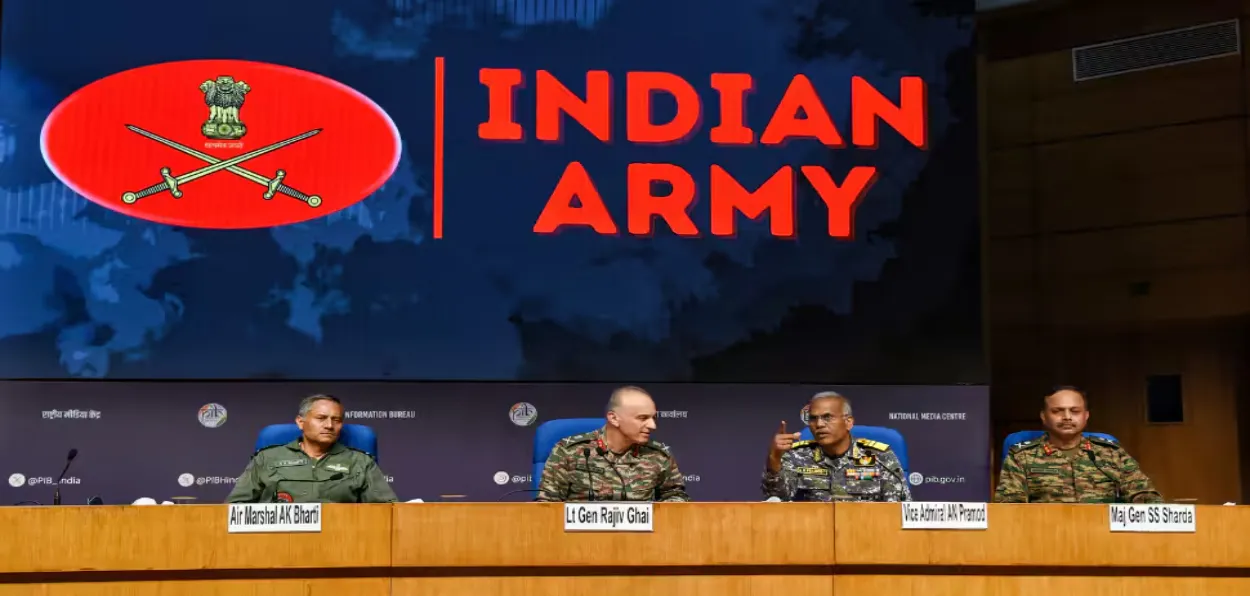
 Sushma Ramachandran
Sushma Ramachandran
The economy has receded into the background recently as the country is preoccupied with dealing with the fallout of the brief but intense conflict with the western neighbour. The one issue that is grabbing headlines is Prime Minister Narendra Modi’s clear-cut assertion that trade and terror cannot go hand in hand.
This followed comments by U.S. President Donald Trump regarding the ceasefire and his plan to increase trade with both India and Pakistan. Yet the focus is gradually shifting to economic and developmental parameters. In a series of interviews recently, Confederation of Indian Industry (CII) chief Sanjiv Puri highlighted the fact that 6.5 per cent growth can be achieved in the current fiscal -2025-26 - owing to the resilience of the economy.
Puri attributed the potential for healthy growth to the country’s robust economic foundation. To achieve long-term aims of becoming a developed economy, however, he felt an even higher growth target of seven to eight per cent needed to be set. He also underlined that geopolitical uncertainties were bound to affect investment flows despite increased interest in segments like energy, transportation, metals, chemicals, and hospitality. The corporate leader did not refer to the impact of border tensions between India and Pakistan, except to voice the industry’s support for the government in all its actions.
Even so, corporate India and policymakers must recognise that prolonged friction between the two countries will leave its mark on the broader economy. The recent face-off lasted only a few days and may not have an immediate fall-out, but a longer conflict is bound to have wider ramifications.
These issues need to be taken into account in future growth projections since the present ceasefire appears to be a tenuous one. It was breached by intermittent firing from Pakistan even on the day of the ceasefire announcement. The guns may have been silenced eventually, but unresolved issues related to terror flowing from the country’s western borders are still on the table. Prime Minister Modi has also clarified that Operation Sindoor has only been suspended, and further terrorist activity emanating from Pakistan will invite a swift reprisal. It becomes difficult to have confidence in the prospect of lasting peace in such an uncertain scenario.
In this backdrop, one must therefore consider whether the country’s fast-paced economic growth is also under threat. If there is a resumption of hostilities, one of the first casualties would be the flow of investments from abroad. In recent days, comments of Apple CEO Tim Cook on the sourcing of iPhones from India have attracted widespread attention. He disclosed that iPhones meant for the U.S. market would be largely sourced from India in the coming months. This strategy has been formulated to avoid the higher tariffs envisaged on products from China.
Cook’s comments, however, have been followed by Donald Trump urging Apple to stop investing in India and instead move more manufacturing to the U.S. While these remarks may appear alarming, the tech giant is unlikely to expand production in its home country since such a move will lead to an enormous increase in cost of its devices. Apple is reported to have assured the Indian government that its investment plans in this country have not been altered.
Other multinationals are also following a China Plus One policy, seeking alternative locations for fresh investments. India has been high on their radar.
The question is whether such investments will continue to flow at the same rate in the case of continuing strife at the borders. Corporations, which value stability above all else, may have second thoughts in such a scenario. Yet India’s political stability and security have always been a big factor in its favour for foreign investors. This is expected to continue as a big advantage in continuing to lure foreign direct investment. It remains a haven of peace and rapid economic growth in South Asia, even if prolonged hostilities create short-term disruptions for trade and industry.
However, in such a situation, the planners have to ensure the safety and security of energy installations and industries in western region states like Rajasthan, Gujarat, and Maharashtra. The country has a host of oil and gas platforms in both onshore and offshore areas. Linked to these are a multiplicity of manufacturing units in these states, which are among the most industrialised in the country. Any slowdown or stoppage of operations at these plants will impact economic growth.
On the positive side, the economy is resilient and has sound fundamentals, as noted by the CII chief. It has overcome the disruptive impact on global supply chains following the Ukraine-Russia war. The skyrocketing crude prices to 130 dollars per barrel at the time had been worrisome, but the country's brilliant deal with Russia for supplies at discounted rates saved the day. Inflationary pressures have also been successfully contained despite external headwinds over the past few years. This gives some confidence that even a flare-up at the borders can be tackled successfully.
The northern and western states are bound to be more affected in case of a conflict. This could include short-term constraints on economic activities such as travel, since airports could be shut down in many areas. Such difficulties are not likely to be faced throughout the country, however, especially in the southern region, which is now becoming as industrialised as the West. Karnataka, Tamil Nadu, Andhra Pradesh, and Telangana are among the most favoured by foreign investors in recent years.
ALSO READ: Ajit Doval: Master spy, institution builder, patriot
It would thus be fair to say that there is likely to be a large semblance of normalcy in developmental activity in these areas. Besides, the economy has shown resilience by recovering relatively rapidly from the pandemic and geopolitical stressors. In this backdrop, one can say with considerable certainty that the country will be able to face any war-like situation in the future without a serious setback to economic growth.
The author is a senior journalist and commentrator on economy and geopolitical issues
